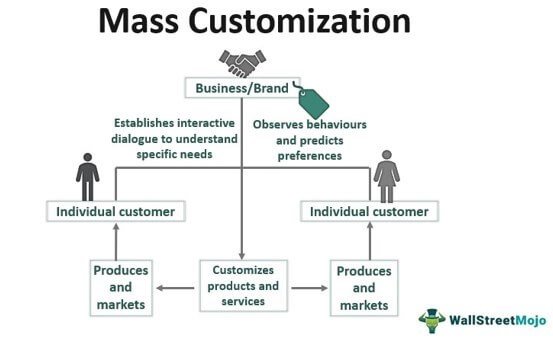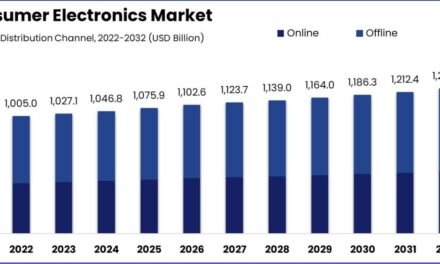Mobile phone manufacturers address consumer demand for customization through a variety of strategies that allow users to personalize their devices to better suit their preferences, needs, and lifestyles. Some of the key ways they achieve this include:
1. Customizable Design Options
- Choice of Materials and Finishes: Manufacturers offer a range of materials (e.g., glass, metal, plastic) and finishes (e.g., matte, glossy, textured) for the phone body. Some brands, like Apple and Samsung, provide options for different colors, including limited-edition colors and gradient finishes to cater to different tastes.
- Customizable Cases and Skins: Many consumers prefer to add personal style by choosing from a variety of phone cases. Some manufacturers also allow users to customize the back of their phone with skins or decals that change the aesthetic without affecting the phone’s functionality.
2. Personalized Software Features
- Custom Themes: Users can personalize the user interface (UI) by changing the color scheme, background wallpapers, lock screen designs, and app icons. Manufacturers like Samsung and Xiaomi offer extensive theme stores where users can download new designs or create their own.
- Home Screen Customization: Android phones, in particular, provide high levels of home screen customization, including the ability to adjust grid size, add widgets, and create shortcuts to streamline access to apps and functions.
- Always-On Displays: Some devices, such as certain models of Samsung Galaxy and Google Pixel, allow customization of the always-on display. Users can select what information is displayed, such as the time, date, notifications, and custom widgets.
3. Modular Phones
- Modular Design Concept: Some manufacturers, like Motorola with their Moto Mods and LG with the LG G5, have explored the modular phone approach, where users can attach and detach various accessories or upgrades to the phone. These modules can include better cameras, speakers, projectors, and more, allowing for deeper customization.
- While this concept is less common today, the appeal of creating a phone that evolves over time through the addition of new modules resonates with tech-savvy consumers who want flexibility.
4. Customizable Hardware Configurations
- Storage and Memory Options: Manufacturers offer different configurations of internal storage (e.g., 64GB, 128GB, 256GB) and RAM (e.g., 4GB, 6GB, 8GB, 12GB) to suit different user needs. This allows users to select a phone that matches their usage habits, such as those who need a lot of storage for apps, media, and games.
- Battery Size and Performance: Some brands also offer phones with different battery capacities to cater to consumers who prioritize battery life.
5. Customizable Accessories and Add-ons
- Cases and Covers: Manufacturers allow users to choose from a range of cases and covers with different designs, colors, and materials (e.g., leather, silicone, plastic). Brands like Apple and Samsung often release collaborations with designers or fashion brands to offer exclusive accessories.
- Smartphone Skins and Wraps: For a more permanent customization, users can apply vinyl wraps or skins that allow for full personalization of the phone’s exterior without altering its original design.
- Custom Earbuds and Smartwatches: Accessories such as customizable Bluetooth earphones or smartwatches that match the phone’s design give consumers more opportunities to customize their mobile ecosystem.
6. Software and App Personalization
- AI and Personal Assistants: Personal assistants like Siri, Google Assistant, and Samsung Bixby enable users to create a more personalized experience by learning their preferences over time. Consumers can customize the voice, responses, and settings of these assistants.
- Personalized Recommendations: Apps like Google Play or Apple’s App Store provide personalized recommendations based on usage patterns and preferences, helping users discover apps that match their interests.
7. Specialized Models for Different Markets
- Region-Specific Features: Manufacturers sometimes release different versions of a phone tailored to specific markets or regions. These phones might offer local languages, regional apps, or local payment systems (e.g., Apple Pay or Samsung Pay) to better serve consumer needs.
- Targeting Niche Groups: Some phone models are designed specifically for niche markets, such as gaming phones like Asus ROG Phone or Xiaomi Black Shark, which feature custom cooling systems, higher refresh rates, and other specialized features tailored to gamers.
8. Custom Software Updates
- User Experience Tweaks: Manufacturers often roll out software updates that introduce customizable settings or new features based on user feedback, allowing customers to further personalize their phones.
- Android Custom ROMs: Android users, in particular, can install custom ROMs to completely overhaul the operating system and experience a unique user interface or functionality that isn’t available in the standard version.
9. Personalization Through AI
- AI-Powered Features: Artificial intelligence (AI) has become a key part of smartphone customization, helping to adapt settings like battery management, camera modes, and performance optimization based on individual usage habits.
- Adaptive Battery and Performance: Phones like those from Google Pixel and OnePlus include AI-powered features that dynamically manage battery life and device performance to suit how the user typically uses their device.
10. Collaboration with Third-Party Customization Services
- Custom Phone Skins and Cases from Third Parties: Many companies, such as Dbrand or Skinit, allow users to order fully customized phone skins with personal designs, logos, or patterns.
- Personalization of Accessories: Some accessories manufacturers offer customization services for chargers, wireless headphones, and even mobile stands, allowing users to create a fully personalized mobile experience.
Conclusion:
Mobile phone manufacturers address consumer demand for customization by providing a variety of design options, modular features, and personalized software configurations. This ensures that users can make their phones not only reflect their personal style but also meet their functional needs. With advancements in AI, modular designs, and personalization tools, manufacturers are likely to continue expanding the possibilities for consumers to customize their mobile devices.
Hashtags
#CustomSmartphones #PersonalizedPhones #SmartphoneCustomization #MobileDeviceCustomization #CustomPhoneDesign #UniqueSmartphones #PhonePersonalization #CustomizableSmartphones #PersonalizedMobileExperience #TailoredMobileDevices #ModularSmartphones #ModularPhones #PhoneModularity #ModularSmartphoneDesign #PhoneCustomizationParts #ModularMobileDevices #ModularSmartphoneTechnology #CustomModularPhones #FlexiblePhoneDesign #PhoneUpgradeableModules #ModularPhoneComponents #CustomSmartphoneSoftware #MobileAppCustomization #PhoneOSCustomization #PersonalizedMobileExperience EfficiencyInTech #TechProductCostOptimization #AffordableSmartphones














